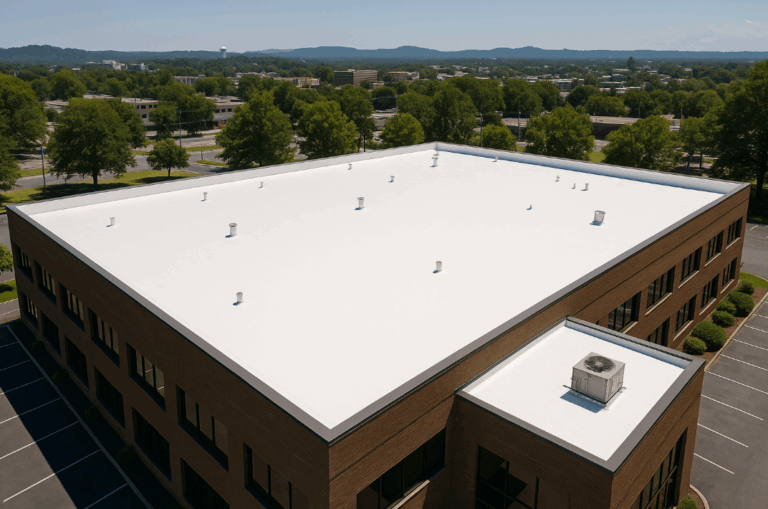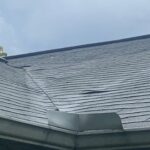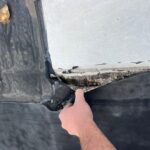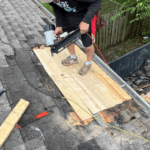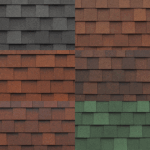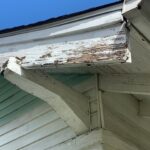When it comes to protecting a commercial building, the roof often bears the brunt of harsh weather, UV radiation, and foot traffic. A roof membrane is failing when it no longer provides the watertight seal it’s designed for, leaving your property vulnerable to leaks, mold, and costly repairs.
At Litespeed Construction in Knoxville, TN, we’ve seen firsthand how overlooked roofing issues can spiral into major structural problems. Whether you’re managing a small office or a large industrial facility, identifying early warning signs of membrane failure can save thousands in repairs or even full roof replacements.
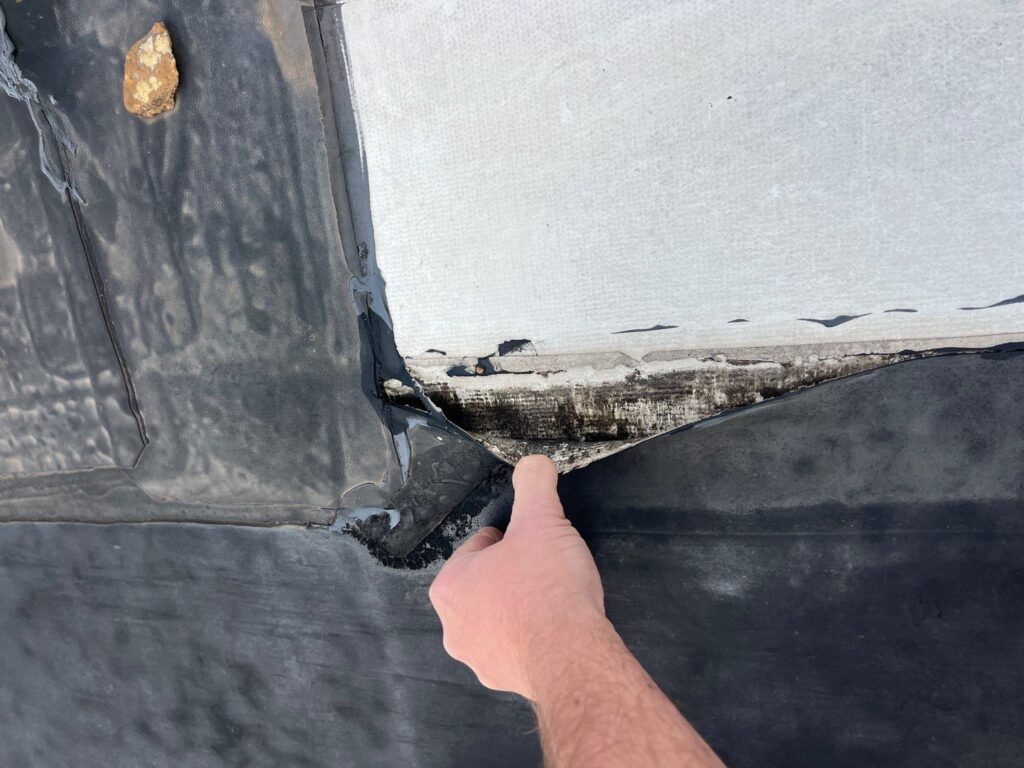
Key Takeaways
💡Water infiltration is the #1 symptom your roof membrane is failing
💡Often due to trapped moisture or poor installation
💡Failing membranes compromise insulation efficiency
💡Water pooling for more than 48 hours is a critical red flag
Why Commercial Roof Membranes Fail
According to the National Roofing Contractors Association (NRCA), membrane-based roofing systems account for more than 80% of commercial roof installations in the U.S., including EPDM, TPO, and PVC systems. But even the best membrane systems have a finite lifespan and are susceptible to environmental and mechanical damage.
Common Causes of Membrane Failure:
| Cause | Description |
|---|---|
| Age & UV Exposure | Prolonged exposure degrades membrane material, especially TPO and EPDM. |
| Improper Installation | Faulty seams, poor adhesion, or wrinkles lead to premature failure. |
| Foot Traffic | Roofs with frequent access can suffer from punctures and membrane erosion. |
| Weather Extremes | Hail, wind, and freeze-thaw cycles can split or tear the membrane. |
| Ponding Water | Standing water breaks down the membrane and leads to mold or algae growth. |
| Mechanical Equipment | HVAC units can cause wear around penetrations and seams. |
Visible Signs Your Roof Membrane Is Failing
Early detection of a failing roof membrane can prevent tens of thousands in damage. Here are some of the top visible signs:
✅ Blistering or Bubbling
When air or moisture gets trapped between the membrane layers, it causes blisters. These bubbles eventually crack and compromise the watertight seal.
📊 Fact: 60% of premature membrane failures are related to trapped moisture or poor installation (NRCA, 2022).
✅ Open Seams
Membrane seams can peel or separate due to age, poor welding, or mechanical movement. This allows water infiltration during rainfall.
✅ Cracks or Tears
Look for punctures, especially near edges or around flashing. These typically result from foot traffic or wind uplift.
✅ Discoloration or Staining
Stains and discoloration might indicate UV degradation or chemical exposure from HVAC runoff.
Functional Warning Signs
Some symptoms aren’t visible to the naked eye but show up through the building’s performance or interior conditions.
🧊 Sudden Increase in Energy Bills
When the roof membrane is failing, insulation underneath may get saturated, reducing its R-value and increasing HVAC costs.
💡 Statistic: The U.S. Department of Energy estimates that 25-35% of a building’s energy loss occurs through the roof.
💧 Water Leaks or Mold Indoors
Brown spots on ceilings, peeling paint, or visible mold may point to membrane breaches.
🌊 Ponding Water
If water is pooling longer than 48 hours after a rainstorm, it’s a sign the drainage system or membrane has failed.
Types of Roof Membranes and Their Specific Issues
Different membrane systems show failure signs in unique ways. Here’s how to identify issues based on material:
| Membrane Type | Common Lifespan | Failure Signs |
|---|---|---|
| EPDM | 20-25 years | Shrinking, open seams, surface chalking |
| TPO | 15-20 years | UV degradation, cracked seams |
| PVC | 20-30 years | Brittleness, chemical burns |
| Mod Bit | 10-20 years | Granule loss, cracking, blistering |
The Cost of Ignoring a Failing Roof Membrane
Delaying repairs when a roof membrane is failing often leads to:
- Structural damage to decking and insulation
- Interior water damage affecting tenants or operations
- Mold remediation costs and indoor air quality risks
- Complete roof replacements which can cost $7–$12 per square foot
📉 Data from FEMA indicates that mold can begin growing within 24–48 hours after water infiltration.
Professional Roof Inspections: Your Best Line of Defense
A certified inspection from roofing experts like Litespeed Construction ensures early detection of problems that could go unnoticed. We provide drone imaging, moisture scanning, and core sampling to determine:
- Membrane saturation levels
- Structural decking integrity
- Proper slope and drainage
- Flashing and penetration seal performance
📍 Our Knoxville-based team can typically inspect and report on your roof within 48 hours.
FAQs about Commercial Roof Membranes
Look for leaks, bubbling, open seams, discoloration, and increased energy bills.
Improper installation and lack of maintenance.
15–30 years depending on the material and maintenance.
Yes, localized repairs can extend life if caught early.
It could lead to structural damage, mold, and full roof replacement.
Between $7 and $12 per square foot on average.
Sometimes — typically if caused by storm damage, not wear and tear.
Only with proper walkway pads or during maintenance with precautions.
Yes, at least twice a year and after major storms.
Litespeed Construction – Trusted local experts with decades of experience.
Contact Litespeed Construction Today
Don’t wait until your roof membrane is failing completely. If you’re noticing signs of wear or want to be proactive with inspections, Litespeed Construction is your go-to commercial roofing partner in Knoxville, TN — and beyond.

